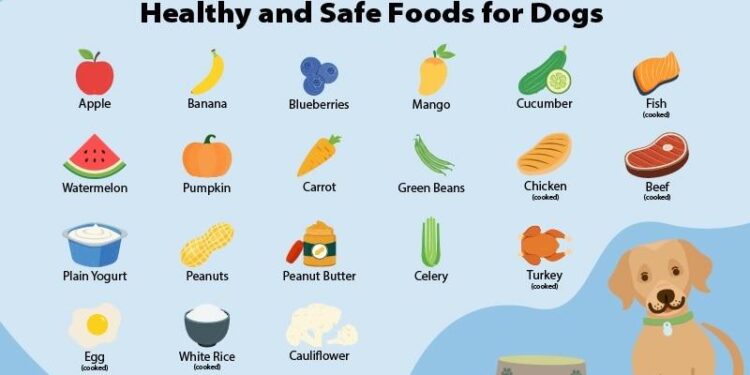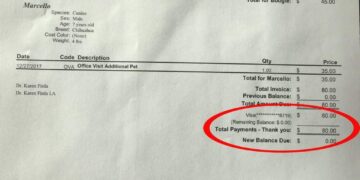Table of Contents
I’ve been a cat person for my entire adult life—over 15 years now.
I thought I’d seen it all.
But nothing prepared me for the helplessness I felt watching my best friend, a sleek silver tabby named Leo, tear himself apart.
It started subtly.
An ear twitch here, an extra scratch there.
But soon, the scratching became frantic, relentless.
His purrs, once the soundtrack to my evenings, were replaced by the constant, heartbreaking sound of his claws against his own skin.
Leo was my shadow, my confidant, the warm weight on my feet on cold nights.
He had been the picture of feline health until, suddenly, he wasn’t.
The vet visits began, a blur of exams and theories.
The leading suspect was a food allergy.
It sounded simple enough to solve.
I was given the standard advice, the “gold standard” path that countless pet owners are sent down: a strict elimination diet using a “novel protein.” We were prescribed a veterinary diet of venison and pea, a formula containing ingredients Leo had supposedly never encountered.
I followed the rules with the precision of a lab technician, filled with a desperate hope that this was the answer.
But it wasn’t.
Weeks turned into months of agonizing failure.
The itching intensified.
His beautiful silver fur began to thin around his head and neck.
To make matters worse, his digestion rebelled, adding vomiting and diarrhea to his list of miseries.
I was watching the vibrant, joyful cat I loved fade into a miserable, tormented creature, and the very solution meant to save him seemed to be accelerating his decline.
This is the story of that nightmare, but more importantly, it’s the story of what came after—the deep dive into veterinary science, the unexpected epiphany from a completely unrelated field, and the discovery of a different kind of food that didn’t just treat Leo’s symptoms, but fundamentally outsmarted his disease.
It’s the story of hydrolyzed protein, and how understanding its remarkable science finally allowed us to silence the itch we couldn’t scratch.
Part 1: The Unseen Enemy – Decoding Your Cat’s Mysterious Illness
The journey to a diagnosis is often a bewildering maze of symptoms and possibilities.
Before we could find a solution, I had to learn to speak the language of Leo’s illness, to understand the invisible enemy waging war inside his body.
It was a crash course in feline immunology, driven by the urgency of his suffering.
1.1 More Than Just an Upset Stomach: Recognizing the Signs
Leo’s illness wasn’t a single, clear problem; it was a constellation of misery.
The most visible and distressing symptom was the pruritus—the medical term for the maddening, inescapable itch.
It was non-seasonal and constant, primarily focused on his head and neck, a classic sign of a food-based allergy.1
As he scratched, his skin erupted in tiny, crusty bumps, a condition veterinarians call miliary dermatitis.2
His constant grooming, a once-soothing ritual, became a frantic, self-destructive act.
He licked and chewed his fur until bald patches appeared, a heartbreaking condition known as self-induced alopecia.4
While his skin was the most obvious battleground, his digestive system was also under siege.
An estimated 10% to 15% of cats with food allergies also exhibit gastrointestinal signs, and Leo was firmly in that unlucky minority.1
The intermittent vomiting and diarrhea were not just messes to clean up; they were signs that the inflammation was systemic, a fire burning through his entire body.
This combination of skin and GI issues is a powerful indicator that the problem is more likely a food sensitivity than a purely environmental allergy.5
1.2 Allergy vs. Intolerance: It’s All About the Immune System
Initially, I thought Leo just had a “sensitive stomach.” This is a common and critical misunderstanding among pet owners.
The distinction between a food allergy and a food intolerance is not just semantic; it’s fundamental to understanding the problem.
A food intolerance is a digestive issue.
It means the body can’t properly process a certain ingredient, like a human with lactose intolerance who lacks the enzyme lactase.
The immune system is not involved.5
A true food allergy, however, is a full-blown immune system malfunction.
It’s a specific type of adverse food reaction (AFR) where the body mistakenly identifies a harmless food protein as a dangerous invader.4
This triggers an immune response, often a Type I Hypersensitivity reaction mediated by Immunoglobulin E (IgE) antibodies.7
These antibodies sit on the surface of immune cells called mast cells.
When the offending protein comes along and binds to these antibodies, it signals the mast cells to release a flood of inflammatory chemicals, including histamine.
It is this chemical flood that causes the intense itching, skin inflammation, and gastrointestinal distress.6
1.3 The Usual Suspects: Why Your Cat’s Favorite Food Could Be the Culprit
“But he’s been eating chicken his whole life!” I protested to my vet.
It seemed impossible that the food he loved could suddenly be his tormentor.
This is another core paradox of food allergies.
An allergy can only develop to an ingredient the cat has been previously exposed to; the immune system needs time to become sensitized and build up those specific IgE antibodies.2
This is why the most common food allergens in cats are not exotic ingredients, but the very proteins found in the majority of commercial cat foods: beef, fish, and chicken.2
A cat can eat the same food for years without a problem, only for its immune system to cross a threshold and suddenly declare that trusted protein an enemy.
Less common, but still possible, are allergies to lamb, dairy, egg, wheat, or corn.3
This reality leads to a challenging situation for well-intentioned pet owners.
Many of us believe that providing a wide variety of foods and proteins is a sign of good care.
However, this practice can inadvertently create a diagnostic minefield down the road.
Every new protein introduced—duck, rabbit, kangaroo—is one less “novel” option available if an elimination diet trial becomes necessary.
By exposing a healthy cat to these exotic proteins, we effectively “burn” our diagnostic tools for the future, making the already difficult task of finding a truly new protein almost impossible.11
In a strange way, dietary simplicity for a healthy cat can be a form of long-term health insurance.
1.4 The False Promise of Easy Answers: Why Blood and Saliva Tests Fail
In my desperation for a quick answer, I scoured the internet and found a tempting array of at-home allergy tests using blood, saliva, or even hair samples.
The appeal is obvious: a simple test that promises to deliver a neat list of “good” and “bad” foods.
Unfortunately, the consensus in the veterinary community is unequivocal: these tests are not considered reliable or accurate for diagnosing food allergies in pets.2
They often produce false positives, flagging ingredients the pet isn’t actually allergic to, which can lead to unnecessary and overly restrictive diets.
They can also produce false negatives, giving a clean bill of health to the very ingredient causing the problem.
The only way to definitively diagnose a food allergy—the undisputed “gold standard”—is through a meticulously conducted elimination-challenge diet trial.2
It’s a long and arduous process, but it’s the only one that provides a true answer.
My journey with Leo was about to prove just how arduous it could be.
Part 2: The “Gold Standard” That Felt Like Fool’s Gold: Our Failed Elimination Trial
Armed with a diagnosis of “suspected food allergy,” we embarked on the gold standard: an elimination diet trial.
The protocol is straightforward in theory but crushingly difficult in practice.
For 8 to 12 weeks, the pet must consume nothing but a specially prescribed diet and water.
No treats, no table scraps, no flavored medications or supplements—not even a crumb.15
Any deviation resets the clock.
For Leo, this meant a prescription diet of venison and pea, a protein and carbohydrate he had, to my knowledge, never eaten before.
It felt like we finally had a map out of the wilderness.
But as the weeks dragged on, it became clear we were marching deeper into it.
2.1 The Novel Protein Gamble: Our Venison and Pea Nightmare
I committed to the trial with military discipline.
Our other cat was fed in a separate room, bowls were washed immediately, and every family member was briefed on the absolute zero-tolerance policy for contraband snacks.
The first few weeks were filled with a tense, hopeful waiting.
But the itching didn’t subside.
By week six, I was starting to panic.
By week ten, it was undeniable: Leo was getting worse.
The scratching was more intense, the patches of hair loss were larger, and his vomiting had become a near-daily occurrence.
The failure of the trial was more than a disappointment; it was a crushing blow.
We had invested nearly three months of strict adherence, significant expense, and immense emotional energy, only to end up in a worse place than where we started.
It forced me to question everything I had been told and sent me on a deep dive into the veterinary literature to understand how the “gold standard” could fail so spectacularly.
2.2 Why Novel Protein Diets Are a Minefield
My research revealed that our experience was not unique.
While novel protein diets can work for some pets, they are fraught with hidden pitfalls that lead to a high rate of failure.
The entire strategy rests on a foundation that is often shakier than it appears.
I discovered three primary reasons why this approach is a gamble.
1.
The “Novelty” Trap: The core premise is finding a protein your cat has never been exposed to.
In the past, when most cat foods were based on chicken or beef, finding a novel source like duck or venison was relatively easy.
Today, the pet food market is flooded with “gourmet” and “exotic” formulas.11
Many well-meaning owners have already fed their cats diets containing duck, rabbit, salmon, and other proteins, making it incredibly difficult for a veterinarian to identify a protein that is truly novel to that specific animal’s immune system.14
2.
The Cross-Contamination Crisis: This is perhaps the most critical and overlooked failure point.
While veterinary prescription diets are manufactured with strict quality control protocols to prevent cross-contamination, the same cannot be said for over-the-counter (OTC) “limited ingredient” diets.4
Multiple studies have found that retail pet foods frequently contain DNA from proteins not listed on the label.13
A bag of “limited ingredient venison” food might be contaminated with trace amounts of chicken or beef from being processed on the same equipment as other formulas.
For a highly sensitive cat, even these microscopic amounts are enough to keep the allergic reaction going, rendering the entire 12-week trial invalid.12
3.
The Cross-Reactivity Riddle: The immune system doesn’t always see proteins as distinctly as we do.
Proteins from related animal species can have similar molecular structures.
This means a cat’s immune system, primed to attack beef protein, might also recognize and attack the structurally similar protein from venison—a phenomenon called cross-reactivity.9
Similarly, a chicken allergy can cross-react with other poultry like duck or turkey.20
This biological fact can undermine the entire premise of a novel protein diet, even if the food is pure and truly “novel” in terms of exposure.
The failure of a diagnostic trial is not a neutral event.
It represents a significant period—two to three months—where the cat continues to suffer, and the owner’s stress, anxiety, and financial strain are amplified.
This “diagnostic downward spiral” can lead to burnout, erode trust in the veterinary process, and tragically delay effective treatment.
It highlights the critical importance of choosing a diagnostic strategy with the highest possible chance of success from the very beginning.
2.3 The Hidden Toll: Caregiver Burden and the Cost of Chronic Illness
Throughout this ordeal, I felt a profound sense of isolation.
I was exhausted, anxious, and overwhelmed with guilt.
Watching Leo suffer, feeling powerless to stop it, was a heavy weight.
The vet bills mounted, the special food was expensive, and my social life dwindled because I was constantly worried about him.
I didn’t have a name for it then, but I was experiencing caregiver burden.
This is a clinically recognized phenomenon, first studied in humans caring for chronically ill family members, that is now understood to deeply affect pet owners as well.21
Research has shown that owners of chronically or terminally ill pets report significantly higher levels of stress, anxiety, and depressive symptoms, coupled with a lower overall quality of life, compared to owners of healthy pets.22
The burden is multifaceted: it’s the financial strain of ongoing care, the time commitment for treatments and vet visits, the emotional toll of witnessing a loved one’s decline, and the psychological stress of making difficult medical decisions.21
By acknowledging and naming this experience, we validate the profound emotional reality of caring for a sick P.T. It is not “just a cat”; it is a cherished family member, and the grief and stress are real and significant.25
Part 3: The Epiphany: A Lesson from Cryptography
At my lowest point, I felt trapped.
The “gold standard” had failed, Leo was miserable, and I was emotionally and financially drained.
One evening, trying to distract myself, I was reading an article about the history of cryptography and military code-breaking.
It described how codebreakers, faced with an unbreakable encryption, wouldn’t just try to guess the key.
A more sophisticated approach was to find a way to shatter the key itself, breaking it into such small, random fragments that it no longer worked in the lock.
Suddenly, everything clicked into place.
A powerful analogy formed in my mind, reframing Leo’s entire problem not as a mystery to be solved, but as a code to be broken.
The “Key and Lock” Analogy of a Feline Food Allergy:
- The Lock: Imagine your cat’s immune system is covered in millions of tiny, highly specific locks. These are the IgE antibodies attached to mast cells, each designed to recognize a very particular shape.
- The Key: A whole protein molecule, like one from chicken or beef, has a complex, three-dimensional structure. This specific shape is the “key.” When this protein-key finds and fits into the immune system’s lock, it turns, triggering the alarm—the release of histamine and the cascade of allergic symptoms like itching and inflammation.
- The Novel Protein Fallacy: The novel protein approach is like a frantic search for a new, different key. You’re trying to find a protein (venison, duck, rabbit) that your cat’s body has never made a lock for. You’re hoping this new key simply won’t fit anywhere. But as I learned the hard way, this is a guessing game. Because of cross-reactivity, your “new” venison key might be shaped just enough like the old beef key to fit into the lock anyway. And because of cross-contamination, a few of the old, allergenic chicken keys might have been accidentally mixed into your bag of new keys.
- The Epiphany—Breaking the Key: The article on cryptography gave me a new strategy. What if, instead of searching for a new key, I could take the original, problematic key—the chicken protein—and shatter it into a thousand tiny, misshapen pieces? What if I could break it down so completely that none of the resulting fragments were large enough or shaped correctly enough to fit into any of the immune system’s locks?
This was the conceptual breakthrough I needed.
I wasn’t looking for a different food anymore.
I was looking for a different kind of food—one built on the principle of breaking the key.
This is the fundamental, elegant science behind hydrolyzed protein.
Part 4: The Solution Unlocked: The Science and Sense of Hydrolyzed Protein
Armed with my new “Key and Lock” analogy, I returned to my veterinarian not with despair, but with a new line of inquiry.
This led me to the world of therapeutic veterinary diets and the remarkable food engineering behind hydrolyzed protein.
It was a solution based not on guesswork, but on sophisticated, targeted science.
4.1 Molecular Scissors: How Enzymatic Hydrolysis Works
Hydrolyzed protein cat food is the practical application of my cryptographic epiphany.
The core technology is a biotechnological process called enzymatic hydrolysis.27
In simple terms, food manufacturers take a source protein, like chicken or soy, and treat it with specific enzymes called proteases.
These enzymes act as “molecular scissors,” systematically cutting the long, complex protein chains at specific points.28
The goal is to break the large, intact, and potentially allergenic protein molecules down into tiny fragments called peptides and even smaller individual amino acids.18
The effectiveness of this process is measured by the size of the resulting fragments, expressed in a unit called daltons (Da) or kilodaltons (kDa).
A typical protein might be very large, but the hydrolysis process aims to create peptides that are too small for the immune system’s “locks” to recognize—ideally under 10 kDa, and in some cases, as small as 1 to 3 kDa.32
By shattering the protein “key” into these unrecognizable fragments, the food can deliver essential amino acids for nutrition without triggering the immune alarm.
The body gets the nutrients it needs, but the mast cells are never signaled to release their inflammatory chemicals.29
4.2 Why Hydrolyzed Protein is the Superior Diagnostic Tool
After the failure of our novel protein trial, the logic of starting with a hydrolyzed diet became overwhelmingly clear.
For many cats, especially those like Leo with an extensive or unknown dietary history, a hydrolyzed diet is the most efficient and reliable tool for an elimination trial.14
It elegantly bypasses the three main failure points of novel protein diets:
- It eliminates the novelty guesswork. It doesn’t matter if the cat has eaten chicken before, because the hydrolyzed chicken protein is no longer recognizable to the immune system as chicken.32
- It mitigates the risk of cross-reactivity. The protein fragments are too small to share the structural similarities that cause cross-reactions between, for example, beef and venison.18
- It relies on the stringent quality control of veterinary diets. Prescription hydrolyzed foods are manufactured under conditions designed to prevent the cross-contamination that plagues many OTC diets.12
Starting with a hydrolyzed diet takes the gamble out of the diagnostic process.
It offers the highest probability of getting a clear result—either improvement, confirming a food allergy, or no change, suggesting the problem lies elsewhere—in a single 8-to-12-week trial, preventing the “diagnostic downward spiral” of prolonged suffering and owner burnout.
4.3 The Ultimate Failsafe: Elemental Diets
In my research, I also discovered an even more advanced dietary technology for the most severe and sensitive cases: elemental diets.35
If hydrolyzed diets are made of shattered protein keys, elemental diets are made from the raw metal before the key is even forged.
These diets are not made of proteins or peptides at all.
Instead, they provide nitrogen in its absolute simplest form: individual, purified amino acids.13
This is the ultimate hypoallergenic solution, as there is no protein structure whatsoever for the immune system to react to.
Elemental diets are considered the pinnacle of elimination diets and are often used in human medicine for conditions like Crohn’s disease.36
In veterinary medicine, they serve as a crucial option for pets who fail to respond even to hydrolyzed diets, ensuring complete nutrition with virtually zero risk of an allergic reaction.14
To clarify these complex options, the following table provides a side-by-side comparison to help you have a more informed conversation with your veterinarian.
Table 1: Therapeutic Diet Comparison for Feline Food Allergies
| Diet Type | Mechanism of Action | Best Use Case | Pros | Cons | ||
| Novel Protein | Avoidance: Uses a protein the cat’s immune system has never been exposed to, so no pre-existing antibodies exist. | Cats with a very limited and definitively known dietary history (e.g., a young cat that has only ever eaten one or two types of food). | – Often more palatable than hydrolyzed diets. – Can be slightly less expensive. – Available in both veterinary and OTC formulas. | – High risk of trial failure due to unknown past exposure, cross-contamination (in OTC diets), and immunological cross-reactivity.9 | – Finding a truly “novel” protein is increasingly difficult.11 | – Failure prolongs the pet’s suffering and owner’s stress. |
| Hydrolyzed Protein | Invisibility: Uses enzymes to break down common proteins (e.g., chicken, soy) into fragments too small for the immune system to recognize as allergens. | The recommended starting point for most elimination trials, especially for cats with an unknown or extensive dietary history.14 Also used for long-term management. | – High diagnostic reliability; bypasses the main failure points of novel protein diets. – Can use common, sustainable protein sources. – Available in both dry and canned veterinary formulas. | – Can be less palatable due to bitter-tasting peptides.33 | – Generally more expensive than novel protein diets.- In rare, highly sensitive pets, residual larger peptides could still trigger a reaction.33 | |
| Elemental (Amino Acid-Based) | Non-Antigenic: Provides nutrition using individual amino acids, the basic building blocks of protein. There are no protein structures to trigger an immune response. | The “ultimate failsafe” for severe cases, or for pets who fail to respond to both novel and hydrolyzed protein diets.13 | – The most hypoallergenic option available, with virtually zero risk of an allergic reaction. – Highly digestible and requires minimal digestive effort. – Can resolve symptoms in even the most highly sensitized pets. | – Highest cost of all therapeutic diets.- Palatability can be a significant challenge.- Primarily available as dry food, which has other health drawbacks for cats.36 |
Part 5: Putting It Into Practice: Our Journey with Hydrolyzed Canned Food
With a clear understanding of the science, we were ready for a new plan.
My vet agreed that a hydrolyzed protein diet was the logical next step for Leo.
This time, however, I made another crucial decision based on my research: we would use the canned version exclusively.
This marked the beginning of Leo’s true recovery, a journey that taught me as much about feline nutrition as it did about allergy management.
5.1 The Switch: Starting the Hydrolyzed Diet
We began the transition to a prescription hydrolyzed canned food.
Learning from past mistakes, we did it slowly, mixing a tiny amount of the new food with his old (failed) diet and gradually increasing the proportion over 10 to 14 days to allow his digestive system to adapt.15
The change was not immediate, but it was steady.
Within three weeks, I noticed the first sign of hope: the frantic, middle-of-the-night scratching sessions had stopped.
His vomiting ceased completely.
By the eight-week mark, the transformation was astonishing.
The angry red skin on his neck had calmed to a healthy pink, and soft new fur was beginning to cover the bald patches.
His stools were normal for the first time in months.
The challenge phase, where we briefly reintroduced his old food and saw an immediate, albeit mild, return of itching, confirmed the diagnosis beyond all doubt.1
We had found our solution.
5.2 Canned vs. Dry: Why Moisture is a Non-Negotiable for Cats
My choice to use canned food was deliberate and, in my view, critical for Leo’s long-term health.
Cats are obligate carnivores that evolved in desert environments.
Their bodies are exquisitely designed to derive the majority of their water intake from their prey, which is about 70-75% water.39
They have a naturally low thirst drive and do not instinctively drink enough water to compensate for a moisture-deficient diet.40
Dry kibble typically contains only about 10% moisture.
A cat fed an exclusively dry diet consumes roughly half the amount of water as a cat on a moisture-rich diet, placing them in a state of chronic, low-level dehydration.39
This is a major contributing factor to two of the most common and serious feline health issues:
chronic kidney disease (CKD) and feline lower urinary tract disease (FLUTD), which can lead to painful and potentially fatal urinary blockages.41
Canned food, with a moisture content of around 75-80%, closely mimics a cat’s natural diet and provides the hydration necessary to support kidney function and keep the urinary tract flushed and healthy.41
For me, the profound benefits of proper hydration made canned food the only responsible choice for Leo’s lifelong health, far outweighing the convenience and lower cost of dry food.
5.3 Tackling the Taste Test: Overcoming Palatability Problems
The biggest practical challenge with hydrolyzed diets is often palatability.
The enzymatic process that breaks down proteins can expose hydrophobic amino acids, creating a bitter taste that many cats reject.33
The texture of canned hydrolyzed food can also be unusual—often a dense, gelatinous pâté that some cats find unappealing.43
Leo was initially skeptical.
Getting him to embrace his new food required patience and a bit of creativity.
Based on advice from my vet and tips from fellow owners in online support groups, I developed a successful strategy:
- Warm it Up: Adding a tablespoon of warm (not hot) water and mixing it in not only softens the dense texture but also enhances the food’s aroma, making it more appealing.44
- Change the Texture: I used a fork to mash the pâté into a smoother, more “mousse-like” consistency, which Leo preferred over the solid block from the can.46
- Serve on a Flat Plate: Some cats dislike the feeling of their whiskers touching the sides of a deep bowl. Serving the food on a flat saucer or plate can make mealtime more comfortable.
- Praise and Positive Reinforcement: I made a point of staying with him during meals, offering gentle praise. This positive association helped him overcome his initial reluctance.
5.4 The Cost of Comfort: Budgeting for a Veterinary Diet
There is no sugarcoating it: veterinary therapeutic diets are expensive.
A case of 24 5.1-ounce cans of hydrolyzed food can cost upwards of $75 to $100, and a large bag of dry food can range from $70 to over $100.47
This represents a significant and ongoing financial commitment that can be a source of stress for many families.
However, there are ways to manage the cost.
Many online retailers like Chewy and ProPlanVetDirect offer a significant discount (often 30-35%) on your first autoship order and smaller, ongoing discounts for recurring deliveries.47
It is also worth discussing costs with your vet, as they may have access to manufacturer coupons or be able to recommend a slightly more affordable but equally effective formula.
For those facing severe financial hardship, organizations like The Pet Fund or Paws 4 A Cure may offer assistance for the veterinary care of pets with chronic conditions.51
While the upfront cost is high, I came to view it as an investment in Leo’s quality of life and, ultimately, a trade-off for fewer emergency vet visits and costly medications down the line.
The following table breaks down the practical considerations when choosing between the two formats of hydrolyzed food.
Table 2: Canned vs. Dry Hydrolyzed Food – A Practical Guide
| Factor | Canned Hydrolyzed Food | Dry Hydrolyzed Food |
| Moisture Content | High (~75-80%) 41 | Low (~10%) 52 |
| Impact on Urinary Health | Excellent. High moisture promotes dilute urine, helping to prevent urinary crystals and reducing the risk of FLUTD and CKD.40 | Poor. Can contribute to chronic dehydration, a major risk factor for urinary and kidney diseases.39 |
| Palatability | Often more palatable for picky cats due to stronger aroma and softer texture. Can be modified with water to improve acceptance.44 | Palatability can be a major issue. The kibble can be very hard, and the bitter taste may be more pronounced.53 |
| Cost per Calorie (Approx.) | Higher. You are paying for water content, processing, and packaging. | Lower. More calorically dense, so a bag lasts longer than a case of cans for the same price.52 |
| Convenience | Less convenient. Requires refrigeration after opening and has a short shelf-life. Not suitable for free-feeding.52 | Highly convenient. Can be left out for free-feeding and is easy to store and measure. Can be used in puzzle feeders.41 |
| Dental Health Perception | Does not provide mechanical cleaning of teeth. | The crunchy texture may help scrape away some plaque, but this benefit is often overstated and is not a substitute for proper dental care.41 |
Conclusion: Beyond the Itch – A New Chapter of Health and Hope
Today, Leo is a different cat.
His silver coat is thick and glossy, his eyes are bright, and his skin is calm and healthy.
The frantic scratching and miserable digestive issues are a distant memory, replaced by contented purrs and playful pounces.
The greatest joy is the simple, profound relief of being able to cuddle him without feeling the scabs under his fur or seeing the distress in his eyes.
The caregiver burden has lifted, replaced by the quiet comfort of knowing he is healthy and happy.
Our journey through the labyrinth of feline food allergies was frustrating, expensive, and emotionally exhausting.
But it taught me a vital lesson: when it comes to complex medical issues, the “standard” approach is not always the best one.
The conventional wisdom of a novel protein diet is a gamble, a shot in the dark that, for many cats like Leo, leads only to prolonged suffering.
The true solution lay in understanding the science—in grasping the elegant logic of enzymatic hydrolysis.
It is a strategy of deconstruction, not substitution.
It empowers us to use a problematic ingredient by rendering it invisible to the immune system.
It’s a testament to how food engineering can provide powerful therapeutic solutions, transforming a source of misery into a source of healing.
If you are reading this because you are living through a similar nightmare with your own beloved pet, please know that you are not alone.
The stress, guilt, and helplessness you feel are real and valid.
But there is hope.
Be a persistent, informed advocate for your P.T. Have a deep conversation with your veterinarian about the science behind different dietary strategies.
Question the path of guesswork and ask about the path of precision.
This journey is a heavy one, but with the right knowledge, you can navigate it.
You can find the solution that allows you to move beyond the itch and into a new, healthier chapter for the companion who depends on you.
For those feeling the weight of this journey, resources are available.
Online communities and support groups for owners of pets with chronic illnesses can provide a sense of community, and organizations like MedVet and Lap of Love offer guidance and social work support to help you navigate the emotional challenges of pet caregiving.26
You don’t have to carry this burden by yourself.
Works cited
- Food Allergies | Cornell University College of Veterinary Medicine, accessed August 13, 2025, https://www.vet.cornell.edu/departments-centers-and-institutes/cornell-feline-health-center/health-information/feline-health-topics/food-allergies
- Food Allergies in Cats – PetMD, accessed August 13, 2025, https://www.petmd.com/cat/conditions/digestive/food-allergies-cats
- The Most Common Food Allergies in Cats | Seattle Vets, accessed August 13, 2025, https://www.catclinicofseattle.com/site/blog/2024/04/15/most-common-food-allergies-cats
- Food Allergies in Cats – VCA Animal Hospitals, accessed August 13, 2025, https://vcahospitals.com/know-your-pet/food-allergies-in-cats
- Pet Food Allergy and Food Intolerance – Purina Institute, accessed August 13, 2025, https://www.purinainstitute.com/centresquare/therapeutic-nutrition/food-allergy-and-food-intolerance
- A food allergy or intolerance in a dog or cat: what’s the difference? – Riverwood, accessed August 13, 2025, https://www.riverwoodpetfood.com/en/blog/a-food-allergy-or-intolerance-in-a-dog-or-cat-what-s-the-difference
- Food allergy in dogs and cats; current perspectives on etiology, diagnosis, and management in – AVMA Journals, accessed August 13, 2025, https://avmajournals.avma.org/view/journals/javma/261/S1/javma.22.12.0548.xml
- Food Allergy in the Cat: A Diagnosis by Elimination – PMC, accessed August 13, 2025, https://pmc.ncbi.nlm.nih.gov/articles/PMC11220937/
- Common food allergens in cats and dogs – DVM360, accessed August 13, 2025, https://www.dvm360.com/view/common-food-allergens-in-cats-and-dogs
- Food Allergies in Cats: Does My Cat Have Food Allergies? – MedVet, accessed August 13, 2025, https://www.medvet.com/food-allergy-cat/
- Dangers Associated with Novel Ingredient Foods – PetMD, accessed August 13, 2025, https://www.petmd.com/blogs/fullyvetted/2012/jan/dangers_of_novel_food_ingredients-12372
- Limited Ingredient Cat Food: Is It Better? – PetMD, accessed August 13, 2025, https://www.petmd.com/cat/nutrition/what-limited-ingredient-cat-food
- Think Your Pet has a Food Allergy? Eliminating Mistakes in Elimination Diet Trials, accessed August 13, 2025, https://sites.tufts.edu/petfoodology/2022/04/04/think-your-pet-has-a-food-allergy-eliminating-mistakes-in-elimination-diet-trials/
- Diet Elimination Trials | Purina Institute, accessed August 13, 2025, https://www.purinainstitute.com/centresquare/therapeutic-nutrition/diet-elimination-trials
- Diagnosing Food Allergies in Cats: Elimination Diet Trials – Canadian Academy of Veterinary Dermatology, accessed August 13, 2025, https://www.cavd.ca/images/In_Clinic_Tools/CAVD_Diet_Trial_handout_for_Cats.pdf
- 5 Common Elimination Diet Trial Mistakes | Today’s Veterinary Nurse, accessed August 13, 2025, https://todaysveterinarynurse.com/nutrition/5-common-elimination-diet-trial-mistakes/
- Nutritional management of chronic enteropathies in dogs and cats – AVMA Journals, accessed August 13, 2025, https://avmajournals.avma.org/view/journals/javma/253/5/javma.253.5.570.pdf
- Hydrolyzed Diets – NC State Veterinary Hospital, accessed August 13, 2025, https://hospital.cvm.ncsu.edu/services/small-animals/nutrition/hydrolyzed-diets/
- Implementing an Elimination-Challenge Diet Trial Cat | VCA Animal Hospitals, accessed August 13, 2025, https://vcahospitals.com/know-your-pet/implementing-an-elimination-challenge-diet-trial-cat
- Unique Features of Food-Responsive Disease in Cats – Purina Institute, accessed August 13, 2025, https://www.purinainstitute.com/centresquare/therapeutic-nutrition/unique-features-of-food-responsive-disease-in-cats
- The Caregiver Burden in Pet Parents With Chronically Sick Dogs and Cats | PetMD, accessed August 13, 2025, https://www.petmd.com/dog/caregiver-burden-pet-parents-chronically-sick-dogs-and-cats
- Caregiver Burden: When Loving Hurts – Vet Portfolio 2024, accessed August 13, 2025, https://www.vetshow.com/blogs/caregiver-burden-when-loving-hurts
- Caring For Yourself When Caring for a Sick Pet: One Researcher’s Mission, accessed August 13, 2025, https://www.kent.edu/today/news/caring-yourself-when-caring-sick-pet-one-researchers-mission
- WHEN CARING MAKES YOU SHRIVEL – cat.life, accessed August 13, 2025, https://cat.life/en/when-caring-makes-you-shrivel/
- How to cope when your pet is ill – Veterinary Teaching Hospital, accessed August 13, 2025, https://vetmedbiosci.colostate.edu/vth/animal-health/how-to-cope-when-your-pet-is-ill/
- Providing Care for Pets with Chronic Conditions – MedVet Blog, accessed August 13, 2025, https://www.medvet.com/caring-for-a-pet-with-chronic-illness/
- Enzymatic hydrolysis in food processing: biotechnological advancements, applications, and future perspectives, accessed August 13, 2025, https://potravinarstvo.com/journal1/index.php/potravinarstvo/article/view/1962
- Enzymatic hydrolysis in food processing: biotechnological advancements, applications, and future perspectives – ResearchGate, accessed August 13, 2025, https://www.researchgate.net/publication/378919433_Enzymatic_hydrolysis_in_food_processing_biotechnological_advancements_applications_and_future_perspectives
- Hydrolyzed Cat Food: Nutritional Benefits – Love, Nala, accessed August 13, 2025, https://www.lovenala.com/blogs/nutrition-for-cats/the-nutritional-value-of-hydrolyzed-cat-food-explained
- Reduction of Milk Protein Antigenicity by Enzymatic Hydrolysis and Fermentation. A Review, accessed August 13, 2025, https://www.researchgate.net/publication/338115734_Reduction_of_Milk_Protein_Antigenicity_by_Enzymatic_Hydrolysis_and_Fermentation_A_Review
- What Is Hydrolyzed Protein Cat Food? And Is It Right for Your Cat? – PetMD, accessed August 13, 2025, https://www.petmd.com/cat/nutrition/hydrolyzed-protein-cat-food
- What is a Hydrolyzed Protein Diet? – Thrive Pet Healthcare, accessed August 13, 2025, https://www.thrivepetcare.com/thrive-guide/what-is-a-hydrolyzed-protein-diet
- Hydrolysed Protein Diets – WSAVA2013 – VIN, accessed August 13, 2025, https://www.vin.com/apputil/content/defaultadv1.aspx?id=5709749&pid=11372
- AMINO ACID-BASED ENTERAL DIETS – For Canine Adverse Food Reactions And Gastrointestinal Disease – Illinois State Veterinary Medical Association, accessed August 13, 2025, https://www.isvma.org/wp-content/uploads/2022/10/NutritionalManagementofFoodAllergyandAtopy.pdf
- Hydrolyzed Formulas – Purina for Professionals, accessed August 13, 2025, https://www.purinaforprofessionals.com/brands/purina-pro-plan-veterinary-diets/ha-hydrolyzed-formulas
- Taking the chronic out of enteropathies | American Veterinary Medical Association, accessed August 13, 2025, https://www.avma.org/javma-news/2021-11-15/taking-chronic-out-enteropathies
- Hydrolyzed Protein Cat Food: Does Your Cat Need It? – PetCubes, accessed August 13, 2025, https://www.petcubes.com/blogs/hydrolyzed-protein-cat-food/help-cats-with-ibd
- Food Allergies and Elimination Diets in Cats, accessed August 13, 2025, https://www.cavd.ca/images/CAVD_Illustrated_Diet_Trial_Handout_for_Cats.pdf
- The Case Against Dry Diets For Cats — Doctor Backus, accessed August 13, 2025, https://www.doctorbackus.com/doctorbackus/the-case-against-dry-diets-for-cats
- Canned vs Dry Food for Cats | BloomingPaws Clinic, Resort, and Spa, accessed August 13, 2025, https://bloomingpaws.net/canned-vs-dry-food-for-cats/
- Cat Food Nutrition: Canned vs. Dry Guide | Blog – Love, Nala, accessed August 13, 2025, https://www.lovenala.com/blogs/nutrition-for-cats/nutritional-comparison-canned-vs-dry-cat-food
- How Hydrolyzed Cat Food Aids in Digestive Health – Love, Nala, accessed August 13, 2025, https://www.lovenala.com/blogs/nutrition-for-cats/how-hydrolyzed-cat-food-aids-in-digestive-health
- Making hydrolyzed wet food more palatable? : r/cats – Reddit, accessed August 13, 2025, https://www.reddit.com/r/cats/comments/y897lf/making_hydrolyzed_wet_food_more_palatable/
- Hydrolyzed wet cat food : r/catfood – Reddit, accessed August 13, 2025, https://www.reddit.com/r/catfood/comments/1hhtpee/hydrolyzed_wet_cat_food/
- ROYAL CANIN VETERINARY DIET Adult Hydrolyzed Protein HP Dry Cat Food, 12-oz bag, accessed August 13, 2025, https://www.chewy.com/royal-canin-veterinary-diet-adult/dp/35479
- BLUE Natural Veterinary Diet™ – HF Hydrolyzed Wet Cat Food | Blue Buffalo, accessed August 13, 2025, https://www.bluebuffalo.com/wet-cat-food/natural-veterinary-diet/hydrolyzed-food-intolerance/
- Vet Recommended Cat Food & Prescription Diet | PetSmart, accessed August 13, 2025, https://www.petsmart.com/cat/food-and-treats/veterinary-diets
- Prescription Cat Food: Vet Recommended (Free Shipping) | Chewy, accessed August 13, 2025, https://www.chewy.com/b/veterinary-diets-460
- Prescription Cat Food | Petco, accessed August 13, 2025, https://www.petco.com/shop/en/petcostore/category/cat/cat-food/prescription-cat-food-and-treats
- Browse All Pro Plan Veterinary Diets Cat Food & Supplements, accessed August 13, 2025, https://www.proplanvetdirect.com/shop-cat/pro-plan-veterinary-diets-cat-1
- Pet Financial Assistance Resources | Best Friends Animal Society, accessed August 13, 2025, https://bestfriends.org/pet-care-resources/pet-financial-assistance-resources
- Wet vs. Dry Cat Food, or Both? – PetMD, accessed August 13, 2025, https://www.petmd.com/cat/nutrition/wet-cat-food-vs-dry-cat-food-which-better
- Product Reviews for PURINA PRO PLAN VETERINARY DIETS El Elemental Dry Dog Food – Chewy, accessed August 13, 2025, https://www.chewy.com/purina-pro-plan-veterinary-diets-el/product-reviews/1257102
- Dry Pet Food Flavor Enhancers and Their Impact on Palatability: A Review – PMC, accessed August 13, 2025, https://pmc.ncbi.nlm.nih.gov/articles/PMC8622411/
- 4 Ways My Cat Helps Me Cope With Chronic Illness – American Service Pets, accessed August 13, 2025, https://my.americanservicepets.com/cat-helps-me-cope-with-chronic-illness/
- Emotional Support Cats | Benefits & How To Register Your Cat – US Service Animals, accessed August 13, 2025, https://usserviceanimals.org/blog/emotional-support-cats/






